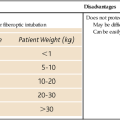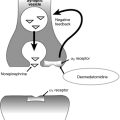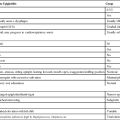Anesthetic risks associated with prematurity
Approximately 12% of infants (one of every eight) born in the United States are born prematurely. Prematurity was previously defined as infants born before 38 weeks of gestation or with a weight of less than 2500 g at birth, but current definitions take into account that morbidity and mortality risks are more closely related to gestational age than to birth weight. The World Health Organization currently defines prematurity as a gestational age of less than 37 completed weeks regardless of birth weight. More than 90% of premature infants who weigh at least 800 g survive. Preterm birth is often due to a combination of fetal, placental, uterine, and maternal factors (Box 197-1).
Premature infants rarely present for surgery unless they are severely ill, and most will have multiorgan disorders. The underlying medical conditions are usually life-threatening respiratory, cardiovascular, or bowel crises (Box 197-2). Premature infants have a higher-than-normal perioperative complication rate following even minor operations. Anesthetic morbidity rate increases directly with the degree of prematurity.






